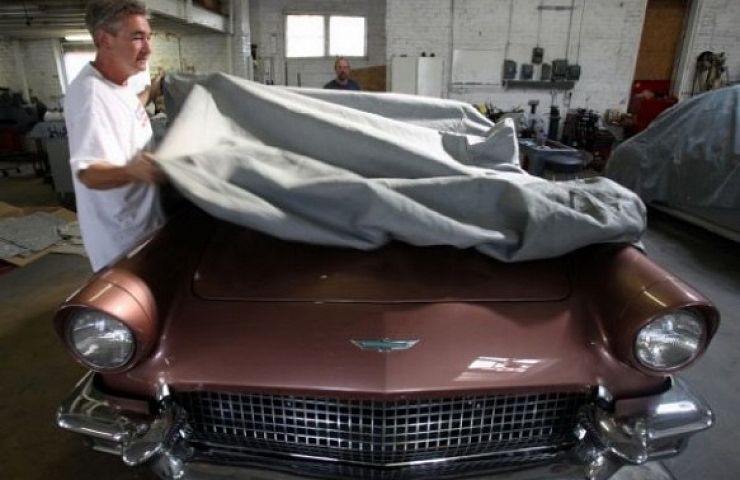Winter is one of my favorite seasons, but it’s not usually a very good time for using your classic – unless that classic is a vintage 4×4 pickup and you love plowing through snowdrifts. For the majority of us, winter generally means our classic cars sit for a couple of months while we wait out the weather. And while sitting can be hard on old cars, it doesn’t have to be. Here are some quick winter classic car storage tips to help you make sure your car will be ready to roll on that first sunny day of spring.
Stay Dry Whether Indoors or Out
Moisture is your car’s enemy, so your best bet is to find an indoor parking space. A heated spot is ideal, but anything enclosed will do. If you have to store your car outside for winter, get some dessicant packs to help suck up any moisture that might make it in. Remember: moisture equals mold and possible rust, and none of that will be fun to find on that first 60-degree day of April. A high-quality waterproof car cover is essential if the car is stored out in the elements.
Keep it Charging Throughout the Winter
Cold temperatures can kill batteries, and so can slight draws on your electrical system. Products like this Battery Tender will keep your battery charged and ready to go, so when you get in and hit the key a few months down the road, you can pretty much guarantee that it’ll crank over. At a starting bid of just $39.99, this is a lot less expensive than a new battery.
Top Off Those Fluids!
Cars that sit can develop leaks, especially from engines, rear ends, and automatic transmissions. It’s always a good idea to make sure all your fluids are full before you put your car into storage – that way, you’ll be able to easily spot any leaky seals quickly when you go to move the car again, and you’ll know just how bad the leak is because you’ll know how full each component was when you parked the car.
Antifreeze is especially important during the winter months. If you have not flushed your cooling system in a while, do it before you put the car away. If the temperature gets really cold, weak antifreeze could possibly lead to a cracked engine block and thousands in repair bills. Replacing it is just cheap insurance.
Mice are the Bane of Winter Storage
Furry little creatures have a habit of making your classic car their home while in winter storage. Don’t let them move in. Keep your doors shut and windows rolled up, and be sure to check in on your car a few times just to be sure nothing has taken up residence. I tend to keep a few mouse traps handy just in case – I’ve had to evict mice from too many heaters and defrosters over the years, and I really don’t like replacing chewed-up wiring.
Treat Your Classic Car’s Fuel Before Storing
Fuel doesn’t keep forever – especially not when the weather is cold. But you don’t need to run your tank dry before your classic car goes into storage for the winter – just get some Sta-bil. Read the instructions and use an appropriate amount to the gas in your tank, and then run the car long enough to fill the fuel lines and carburetor with the treated fuel. When springtime rolls around, you won’t need to worry about bad gas in your tank.
Relax That Suspension
Long periods of sitting are hard on springs, shocks, suspension components, and tires. I like to get my cars up off their suspensions if they’re going to be sitting for more than a month or so. This lets the suspension hang and gets the pressure off the tires, helping to prevent flat spots. A set of jack stands like these are perfect for the job.
At the very least, make sure your tires are properly inflated, and if you can, roll your car back and forth once or twice throughout the winter. It’ll help keep your tires from turning square.
Being proactive with winter classic car storage can save you a lot of trouble down the road. But there is no substitute for a good thorough once-over when spring comes. That’s the time to replace all your fluids, check out the brakes and tires, and generally go over your car from bumper to bumper. But that’s a couple months in the future. In the meantime, enjoy the Holiday season. Spring will be here before you know it!





